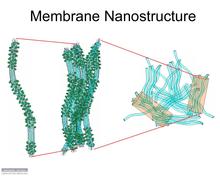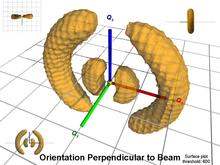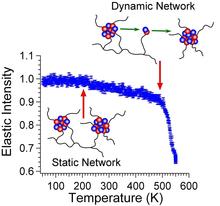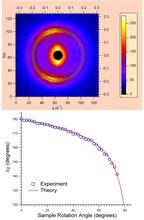Summary
The goal of the project is to develop measurement methods to characterize the nanoscale structure and dynamics of polymer electrolyte membranes (PEMs) to enable the development of robust fuel cells. To this end, we will develop scattering, spectroscopic and surface probe tools for the fuel cells community that elucidate factors impacting the structure and dynamics of PEMs that govern their ultimate performance and durability.
Description
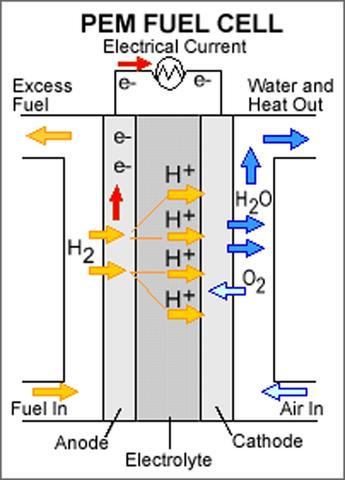
Our program will address key measurement issues related to structure and dynamics of important classes of PEM materials, including emerging systems like block copolymers, polymer blends, and candidate materials proposed by industry leaders like GM. We are developing advanced methods that illuminate the relationship between molecular architecture and the resulting nanostructure of PEM material - information which is key to understanding membrane performance including durability and proton conductivity. Our measurement methods will provide the precise 3D nanoscale morphological information that is missing from current analyses of these materials. For example, we are developing small angle neutron scattering (SANS) techniques that characterize the structure of hydrated, nanostructured membranes based on block copolymers and complex polymer blends. In addition, we are advancing Quasielastic Neutron Scattering (QENS) methods for analysis of polymer and water dynamics in both dry and hydrated membrane materials.
Major Accomplishments
- A huge array of emerging technologies, from new portable electronic devices to smart energy vehicles, depend on the successful development and deployment of efficient, light weight, reliable and cost-effective fuel cells. The potential market for these new goods represents billions of dollars to the U.S. economy.
- Our measurements of polyelectrolyte membrane (PEM) materials will help industry better understand, design and optimize this most critical part of low temperature fuel cells. NIST experimental methods, analytical tools and technological infrastructure will help accelerate the characterization, development and deployment of these important new technologies.
- A new NIST collaboration with General Motors (GM), a leading manufacturer of PEM fuel cell systems, will identify and address key measurement challenges in PEMs.
Due to the influence of the electrostatic interactions in these ion-containing polymers on the developing structure, our work has established the important influence of electrostatic interactions on chain dynamics and developing morphology in PFSI materials that ultimately impact membrane performance through its proton transport properties.
Counterion Dynamics Measurements using Quasi-elastic neutron scattering (QENS) were used to measure the correlations between counter-ion dynamics and bulk mechanical relaxations in alkyl ammonium neutralized membranes. These measurements have provided a physical description of how the network structure contributes to the ionic conductivity properties of the membrane.
QENS is a powerful tool to investigate the counter-ion dynamics in alkyl ammonium neutralized PFSI membranes. We have shown explicitly that the mechanical properties via the a-relaxation in these materials is indeed linked to the onset of mobility of the counter-ions on the length-scale related to the characteristic ionomer morphology. To our knowledge, these data are the first direct measure of the dynamics associated with the ion-hopping process in these ion-containing polymers. These data provide important links between electrostatic interactions and dynamics in ionomers and, moreover, show unequivocally that at the α-relaxation temperature a significant destabilization of the electrostatic network may be observed. This results in the activation of a dynamic network facilitated through an ion-hopping process (figure above).
Morphology of Oriented Membranes The morphology of commercially available membranes is a complex distribution of ionic aggregates (due to polar, acid-functionalized side chains) and crystallites (due to a semi-crystalline polymer backbone). This complex morphology gives rise to several features in the small-angle x-ray and neutron scattering (SAXS/SANS) profiles of these materials. One of the continuing debates in the fuel cell membrane community involves trying to find an appropriate model that better describes the morphology of these materials.
Recent advancements in SANS techniques have been applied to this problem for oriented membranes. Initial studies of the rotationally dependent scattering (above) support a fibillar structure in the stretched state. It is anticipated that a full analysis over several length scales will yield the detailed information about the relative orientation and distribution of the morphological features and aid in developing accurate models of the overall morphology.
Project Summary (PDF)


